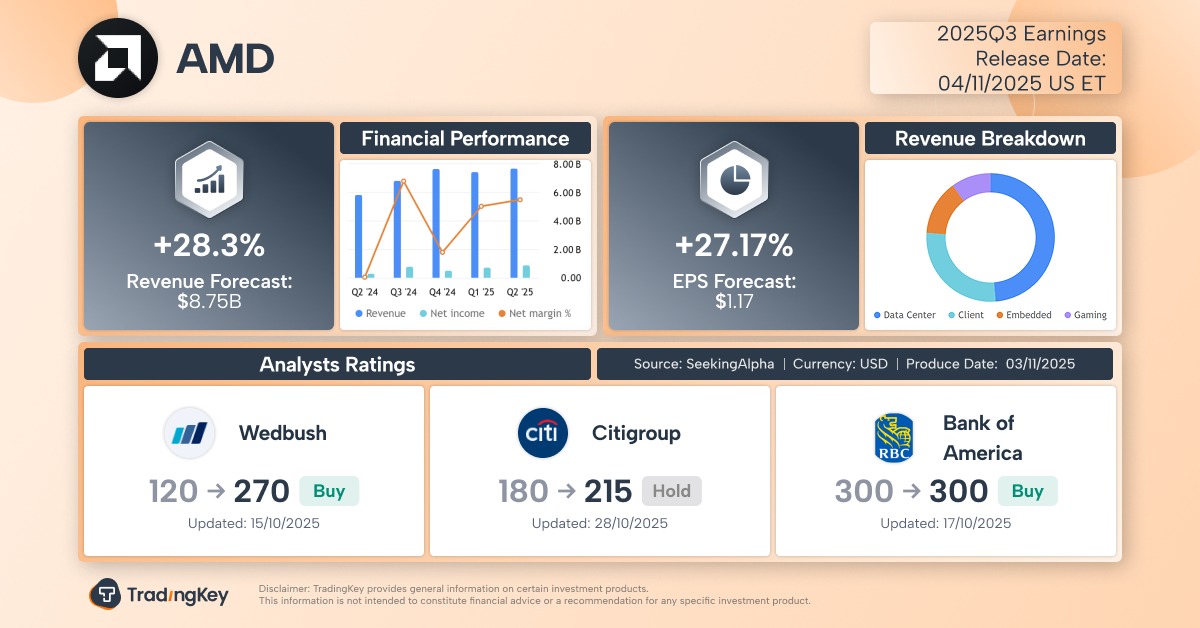Where Will Micron Stock Be in 1 Year?

Investors have faced considerable difficulty owning Micron Technology (NASDAQ: MU). As one of the few makers of DRAM and NAND memory, the company has played a crucial support role in running semiconductor-powered hardware and ensuring the smooth function of software applications.
The semiconductor industry is also well known for its cyclicality, and the memory chip industry has experienced the most volatility. However, despite these extreme movements, Micron appears set to move higher over the next year. Here's why.
The state of Micron
The investment case for Micron has changed because of the cloud and artificial intelligence (AI). These technologies have led to a sustained increase in the demand for digital memory.
Thus, even when the chip industry pulls back, the downturns no longer wipe out all the gains from the up cycle. This means it can sustain growth much like its counterparts on the CPU and GPU sides of the business.
And Micron is the major producer of memory. On the DRAM side of the business, South Korea-based Samsung and SK Hynix are its only main competitors, though other companies also make NAND memory.
For Micron, this unprecedented demand for memory has allowed the company to begin fiscal 2025 with the "best competitive positioning in Micron's history," according to CEO Sanjay Mehrotra.
Not surprisingly, most of the strong demand appears to come from the data center side of the business. To that end, Micron expects to allocate approximately 35% of its expected fiscal 2025 revenue to capital expenditures, primarily devoted to fab construction. This will upgrade its fabs in Idaho and New York to accommodate expected DRAM demand beyond fiscal 2026.
Micron's updated financials
Moreover, its recent financials reflect the increased demand. The company just released its results for fiscal 2024 (ended Aug. 29). Revenue of just over $25 billion rose 62% compared to fiscal 2023. This led to a 22% gross margin, comparing favorably to the negative 9% gross margins in the previous fiscal year.
Also, management kept growth in operating expenses to a minimum, allowing the company to report net income of $778 million in fiscal 2024. This is a vast improvement from the $5.8 billion loss for fiscal 2023.
Its rapid growth should continue, as Micron forecasts between $8.5 billion and $8.9 billion in revenue for the first quarter of fiscal 2025. If the prediction holds, revenue will rise by 84% at the midpoint. Even if the fiscal 2025 increase amounts to 52%, as analysts estimate, Micron is on track for rapid growth, albeit slightly slower.
Thanks in large part to the post-earnings bump, Micron stock has risen by more than 60% over the last year. This included a 15% one-day increase the day after releasing its latest financials.
While the recent profitability leaves the company without a meaningful trailing earnings multiple, the rapid profit improvement leaves Micron with a forward price-to-earnings ratio of just 12. And with a price-to-sales ratio of 5, few semiconductor stocks have a lower sales multiple.
Indeed, shareholders should remember that Micron has historically traded at a low valuation due to the memory industry's volatility. Nonetheless, with the secular demand growth for memory chips coming from AI, the company could be ripe for multiple expansion in the near future.
Micron in one year
Anything can happen over the next year, but investors should expect Micron stock to climb significantly higher over that period.
Although it is more vulnerable than most chip stocks to downturns due to its presence in the memory business, the demand for AI chips will increase the need for the memory chips to support the technology. As the major U.S.-based producer, this need plays into the hands of the semiconductor stock and its shareholders, likely leading to gains for Micron in the next year and probably beyond.
Should you invest $1,000 in Micron Technology right now?
Before you buy stock in Micron Technology, consider this:
The Motley Fool Stock Advisor analyst team just identified what they believe are the 10 best stocks for investors to buy now… and Micron Technology wasn’t one of them. The 10 stocks that made the cut could produce monster returns in the coming years.
Consider when Nvidia made this list on April 15, 2005... if you invested $1,000 at the time of our recommendation, you’d have $716,988!*
Stock Advisor provides investors with an easy-to-follow blueprint for success, including guidance on building a portfolio, regular updates from analysts, and two new stock picks each month. The Stock Advisor service has more than quadrupled the return of S&P 500 since 2002*.
*Stock Advisor returns as of September 30, 2024
Will Healy has no position in any of the stocks mentioned. The Motley Fool has no position in any of the stocks mentioned. The Motley Fool has a disclosure policy.







